Packaging materials play a crucial role in shipping, providing protection and security for goods during transit. And there are three main categories of packaging: primary, secondary, and tertiary. In this discussion, we will explore tertiary packaging, which encompasses the filling and outer layers of packaging. And then you can decide which suits you best.
How do packaging materials work in shipping?
The packaging materials are used to enclose, protect, and present products for storage, transportation, and sale. They can get placed in every component of the packaging, including outer containers, internal cushioning, void fill, etc.
The purpose of packaging materials is to serve as a barrier between the product and external factors such as moisture, impact, vibration, and compression. And it also can help to streamline the logistics process, facilitate handling, and ensure efficient storage and transportation.
Considerations when choosing packaging materials for shipping
There is a wide range of packaging materials available, and the choice of material depends on different factors. The first consideration is strength and durability. Regardless of the packaging material you use, it will undergo various transportation tests, such as stacking and rough handling. Therefore, packaging materials must be strong enough to withstand significant external pressure.
The characteristics of the product itself are also important factors to consider. If transporting fragile items like glass, in addition to ensuring sturdy packaging, you need suitable cushioning materials to prevent goods from being damaged. For hazardous materials, specific containers and labels that comply with regulatory standards are necessary.
Furthermore, as environmental sustainability is currently a trend, it is advisable to consider the eco-friendliness of packaging materials and prioritize recyclable options.
10 materials for filling and outer packaging in the shipping
Next, I will introduce to you the 10 most commonly used materials in transportation packaging. Each of them has different characteristics and functions.
Corrugated fiberboard
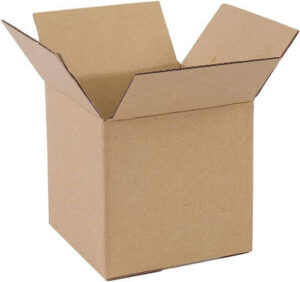
Commonly known as cardboard, corrugated fiberboard is the most common packaging box. It consists of three layers and provides strength, rigidity, and protective cushioning properties. This material is lightweight and has low transportation costs. It is also equipped with grooves internally, which effectively cushion and absorb pressure during transportation.
Moreover, it is easy to cut, fold, and shape into various sizes and shapes to accommodate specific packaging requirements. Additionally, it is easy to print on, allowing for the direct addition of branding, product information, or labels on the packaging. This feature is highly useful for product identification and enhancing brand visibility.
Strapping material
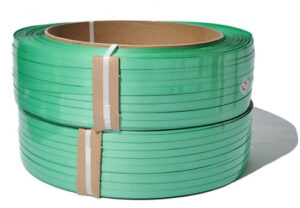
Strapping material can securely fasten and bundle items together, primarily used for smaller items. It can reduce the risk of shifting, moving, or separating during transportation. It features high strength, durability, and tensile strength. So it is capable of withstanding significant tension and pressure during handling and stacking.
These bundling materials can be used for various types of packaging, including cardboard boxes, corrugated boxes, and pallets. Depending on the specific load and transportation requirements, they can be applied horizontally or vertically.
Shrink film
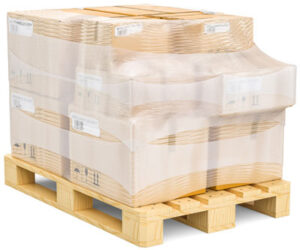
Shrink film, or shrink wrap, is a plastic film that shrinks tightly around the wrapped item, providing a protective covering. It can effectively seal the product, preventing it from being affected by dust, dirt, and moisture. It can get used for packaging a single item, bundling multiple items, or an entire pallet of goods together. This can ensure stability during shipping and help to prevent shifting or damage caused by the movement of individual items.
This material is available in both transparent and translucent options, making it convenient for product identification with no need to open the packaging.
Bundling film

Bundling film is a type of shrink film. It refers to a stretchable film made of plastic or metals. It forms multi-packs of products as a bundle. And it can secure and stabilize items, usually big or heavy products. This material is available in various thicknesses and widths.
Bundling film has high stretchability and elasticity, allowing it to adapt to different shapes and sizes for tight and secure bundling. In addition, it has self-adhesive properties. So it can help keep the film in place, preventing slippage or loosening during transit.
Stretch film box
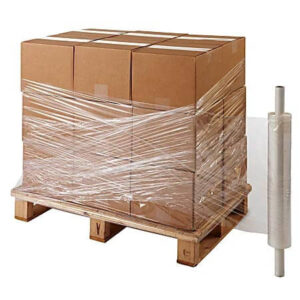
This is a packaging material used for stabilizing and protecting goods. It is usually a roll of thin film that has good elasticity and stretchability. This material primarily gets used to secure goods onto pallets, boxes, or other transportation containers. Its purpose is to reduce the risk of movement and collision during transportation. It is commonly used for unitizing and palletizing, providing a certain level of protection and stability.
Metal crate
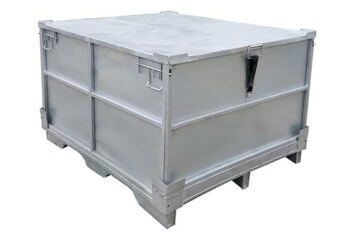
Metal crates are always made of steel or aluminum. They have high strength and durability, capable of bearing heavy loads and resisting external pressure. These crates are suitable for packaging and protecting various types of goods. The products range from heavy or valuable items such as industrial products, machinery equipment to automotive components.
Metal crates can also be in conjunction with pallets to form a complete transport unit, providing more stable support and protection.
The above is the material used for external packaging boxes. Now I want to introduce you to some filling materials for packaging in shipping. They all have excellent cushioning and shock absorption performance. And they are lightweight, which helps minimize the overall weight of the packaging.
Packing foam
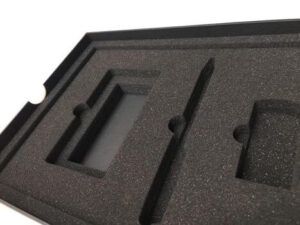
Packing foam is typically made from materials such as PE or PP. It features lightweight and easily moldable. It can get cut and molded based on the shape and size of different items to provide optimal fit and protection. This material also has excellent cushioning properties, capable of effectively absorbing impacts and vibrations.
Furthermore, it is resistant to breaking or deforming, allowing it to maintain its cushioning performance during long-distance transportation and multiple handling processes.
Due to these properties, packing foam commonly get used as a material for filling gaps inside packages. Or people use it to create separate cushioning layers for fragile items. So it can provide independent cushioning protection.
Packing nuts
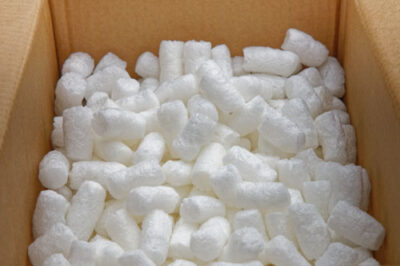
Packing nuts, also called foam peanuts or foam nuggets, are small pieces shaped like peanuts. They are made of EPS foam. These materials are tiny, and light. They often fill spaces in packaging. Foam peanuts are suitable for different types and shapes of products, including fragile or irregularly shaped items such as porcelain or glasses.
By placing them around or inside the packaging gaps, they ensure a snug fit around the product, helping to protect it from impacts.
Air pillow
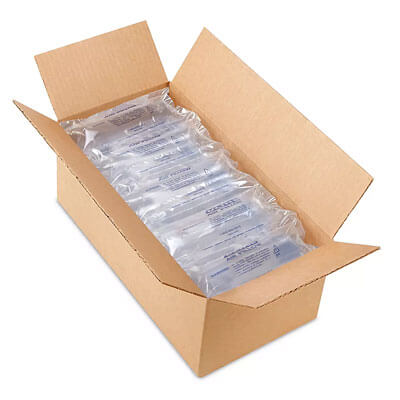
Air pillows or airbags are thin plastic films filled with air. They are used to fill gaps in product packaging, like when transporting ceramic tableware. They come in different shapes and sizes, like rectangles, squares, or bubble wrap-style designs. This material is strong and can withstand punctures, offering dependable protection and cushioning for items being packaged.
Moreover, the air chambers inside the pillows act as barriers, evenly distributing pressure and preventing items from shifting.
Bubble wrap
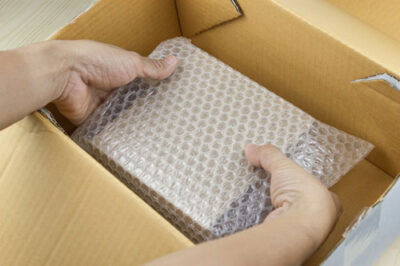
Bubble wrap is a sheet of plastic with air-filled bubbles evenly spaced on it. It often gets used in shipping to protect fragile items during transportation. It can be easily cut or molded to fit various objects of different sizes, shapes, or fragility, such as tall glass cups. And it can fill the whole gaps inside the packaging. Bubble wrap gets used to wrap individual items or placed at the bottom of a box to create a cushioning layer for protection.
As a leading sourcing company in China, Jingsourcing has helped 4000+ clients source and customize products from China. And we also can help you customize packaging and arrange shipping. We have long-term cooperative freight forwarders and keep a good relationship with them. So we can help you get a competitive price. Also, we would choose the most suitable packaging materials based on your products to secure stable and safe shipping.

Leave A Comment